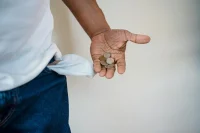The recent moves by foreign firms to patent a rendition of the country’s national anthem and local trademark terms have brought forth a debate on whether the Kenya Copyright Board (KECOBO) has done enough to protect the country’s symbols of national unity and how safe intellectual property is from infringement from third parties in Kenya.
De Wolfe Music, a British production company hit the headlines this week over claims that it has acquired exclusive rights to the Kenyan national anthem, the allegations were quickly dismissed by KECOBO Executive Director Edward Sigei who explicitly underscored that the foreign company has only acquired rights to a rendition of the national anthem.
“They don’t have any rights to the original tune they are only claiming a rendition. Nobody can stop Kenya from using the original tune but there might be issues when the version they are claiming is used,” said Sigei in an interview with a local TV station on Wednesday.
Conversely, the terms Hakuna Matata and Kiondo have been patented by Disney (US) and Japan respectively. The word Safari has also been patented by a foreign firm.
Protecting your work
All works of are protected by Article 22 (1) of the Kenya Copyright Act which states, “Subject to this section, the following works shall be eligible for copyright: (a)literary works (b)musical works (c)artistic works (d)audio-visual works (e)sound recordings (f)broadcasts,”
Article (2) however states that the work cannot be eligible for copyright until it has been broadcast.
READ: GONE BUT FOR HOW LONG? BATTLE FOR THE NATIONAL ANTHEM
International treaties
In the case of instances where a composer wants to copyright their work for international recognition, there are international treaties which provide protection automatically for all creative works as soon as they are fixed in a medium.
SEE ALSO: FACEBOOK’S COMPLICATED RELATIONSHIP WITH KENYANS
Currently there are two primary international copyright agreements, The Universal Copyright Convention and the Berne Convention for the Protection of Literary and Artistic Works.













2 Comments